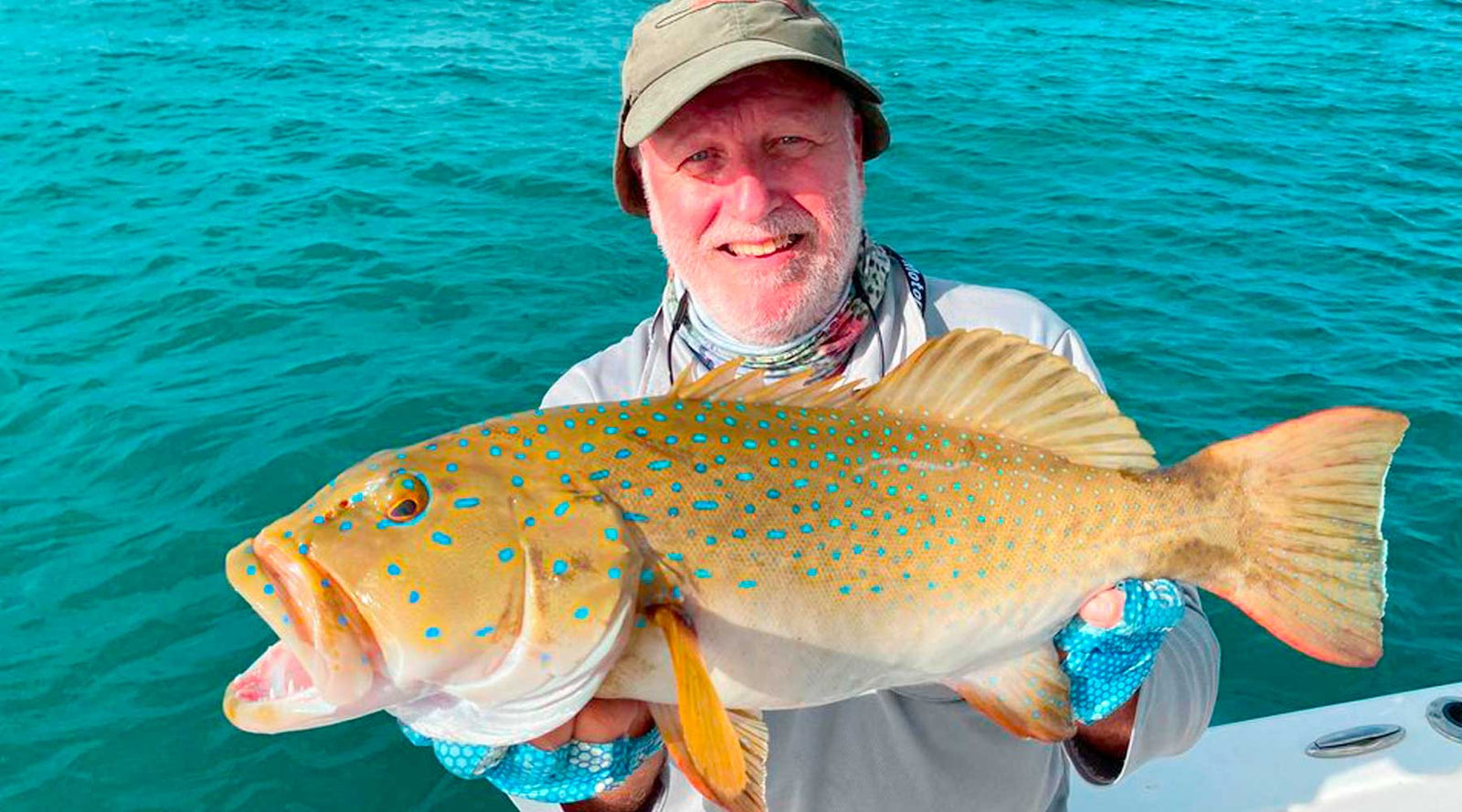Your Cart is Empty
FEEL THE OLD DOG ACTION!

Welcome back to Puppy Preschool!
Trolling lures is one technique that I have used in the past, but not thought much about. That all changed in Papua New Guinea where we spent a lot of time trolling for the mighty Black Bass and it got me thinking about what makes the difference between a successful troll and an unsuccessful one.
The equipment you use for trolling is exactly the same as you would use for casting. Your favourite casting Old Dog Lure will work just as successfully trolled as being cast. The advantage trolling has over casting it that it allows you to cover a lot more water and the lure stays in the fish's strike zone longer. Trolling also allows you to run larger lures, that you might not normally cast, like The Dane or BIG Mutt.
In order to troll, you need a boat, kayak or some other watercraft that is able to maintain a constant speed. You also need a body of water, that is mainly straight and a constant depth. While you can change direction while trolling, it is very easy to cross lines without practice so only small course changes are recommended. The speed at which you troll is dependent on your lure and the target species. For our normal estuary species the slower the better, but when you are trolling for Mackeral and other fish outside river systems a faster speed is required. In PNG, we would troll for about 25m, and then put the engine into neutral and coast until the boat stopped. We only imparted additional action on the lure, through rod jerking, during these slowing down periods.
A trolled lure will generally run deeper then a lure being cast. You can change the depth the lure is running by letting out more line or bringing it back closer to the boat. The perfect position is about 20m behind the boat, any closer and your lure will be in the disturbed water from the boat's motor and any further back you are giving the fish a lot of line at the start of the fight. One trick I like, at the start of the troll, give the motor a quick burst of acceleration. This will leave a large patch of disturbed water you'll be able to see. Drop your lures into that patch of water, and start feeding out line. Once the boat gets the required distance away from that patch of water, stop feeding out line and start your troll.
Because your lure will be running deeper then normal, you have a increased chance of getting snagged. While you are trolling, hold your rod away from the boat. If you feel the lure get snagged quickly point the rod-tip to the back of the boat. What often happens, is that your lure will float up and out of the snag with that little bit of slack line. Unfortunately, this technique doesn't work for sinking lures. I always try and troll with floating lures for this reason. If you see some large structure on the sounder, like a rockbar or a tree, lifting your rod-tip above your head will decrease the depth the lure is running, allowing the lure to pass over the structure without snagging.
If you find your lure is constantly bumping the bottom, just slightly shorted the amount of line out. You only need to 1 or 2m less line out to change the trolling depth by the mount required. And on the other side, if your lure isn't touching bottom, slowly let out more line till you feeling it bouncing off bottom. With the above mention deployment tip, plus the slight depth adjustments just mentioned you are able to keep your trolling depth constant between runs.
Some people will tell you only to troll with the current, and others say go against the current. What everyone does agree with is don't troll across the current. I've had trolling success trolling in both direction, and in PNG we were catching fish off the same structure going in both directions. Trolling across the waves increases the amount of side to side rolling in your boat, which does lead to sea-sickness.
Over the weekend I was involved in an ongoing fish rescue attempt just south of Rockhampton in a nursery system that is currently experiencing a natural fish-kill. Over the 2 days, we were able to capture and relocate 170 Barra ranging from 60mm to 575mm. Every fish was measured, and those big enough were also tagged so we can track in the future how successful our rescue attempt was. If you ever see large numbers of dead fish while fishing please report it to Department of Environment and Heritage Protection on 1300 130 372. Fisheries Queensland is then able to then investigate and issue emergency permits allowing selected groups to attempt a rescue under very strict and controlled rules.
That's all for this Puppy Preschool, enjoy trolling and fishing and please send in photos for future newsletters.
One final note, Ryan Moody Fishing has produced an amazing video on how to make a wire leader for when you are trolling for more toothy fish like Mackeral. You can find the video here:
Comments will be approved before showing up.
